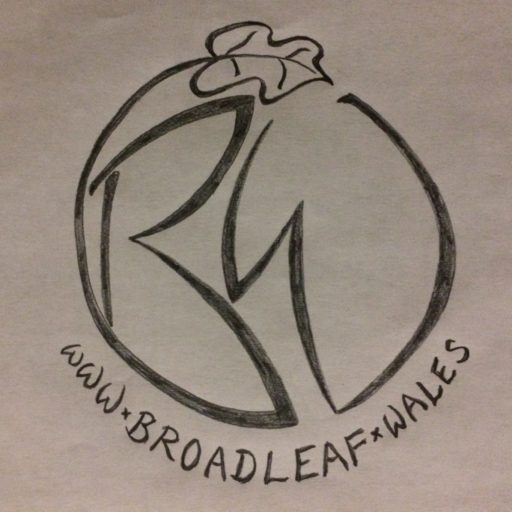Basal area is a measure of how well stocked your woodland is. If you imagine looking down on a hectare of your woodland from a hot air balloon having removed all your tree canopy and trunk down to 1.3m (forestry’s ‘Breast Height’ above the ground), you would see something like this…
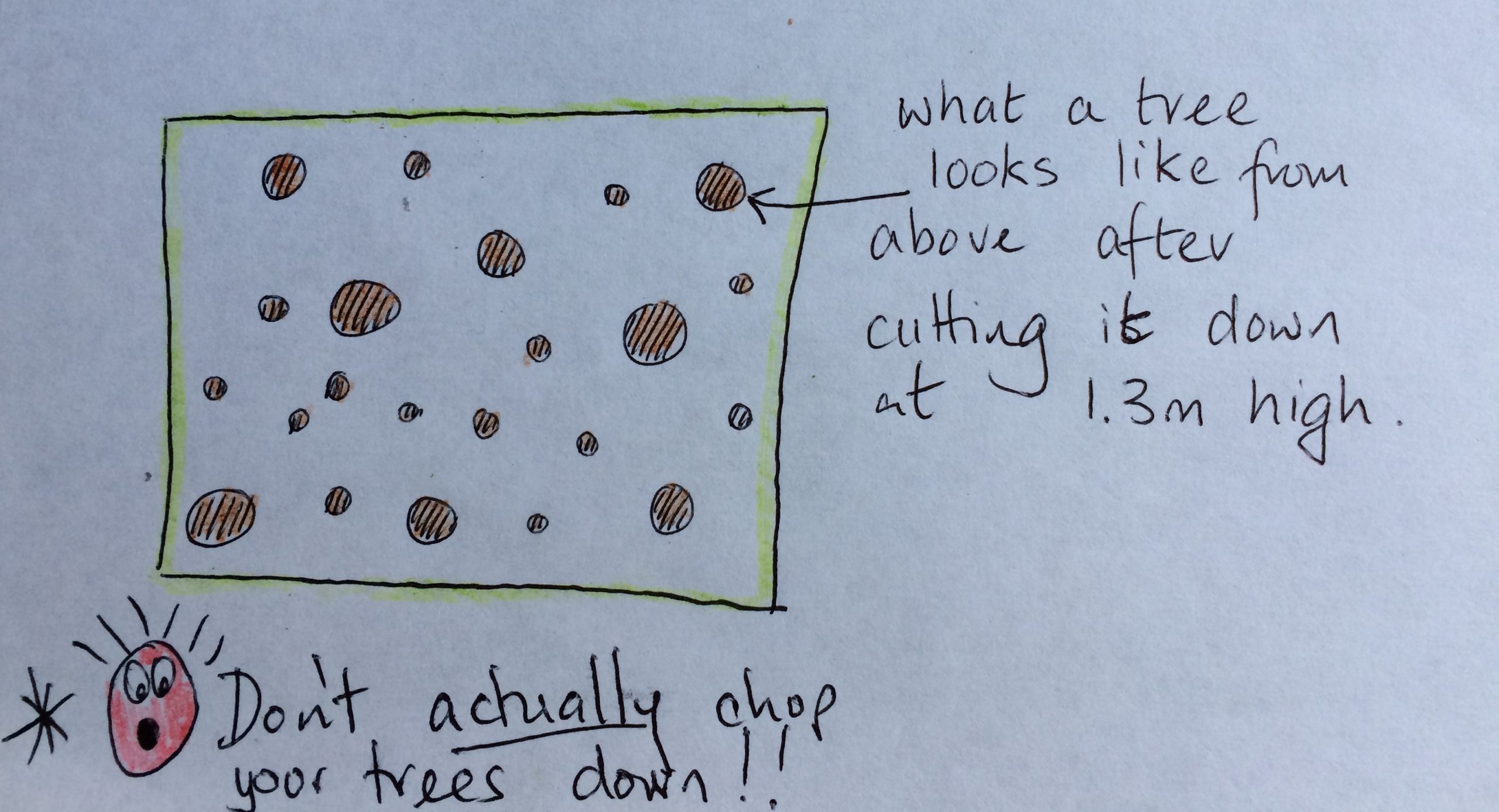
Hot air balloon view of your leafless wood
If you measured the area of all the tree trunks and added them up, you would find out how much of your hectare of woodland is actually ‘tree’ at breast height. This is your basal area and it is measured in metres squared per hectare (m2/ha).
Basal area doesn’t tell you anything about how many trees you have or how big your stems are. A woodland with very many small stems could have the same basal area as a woodland with a very few big stems.
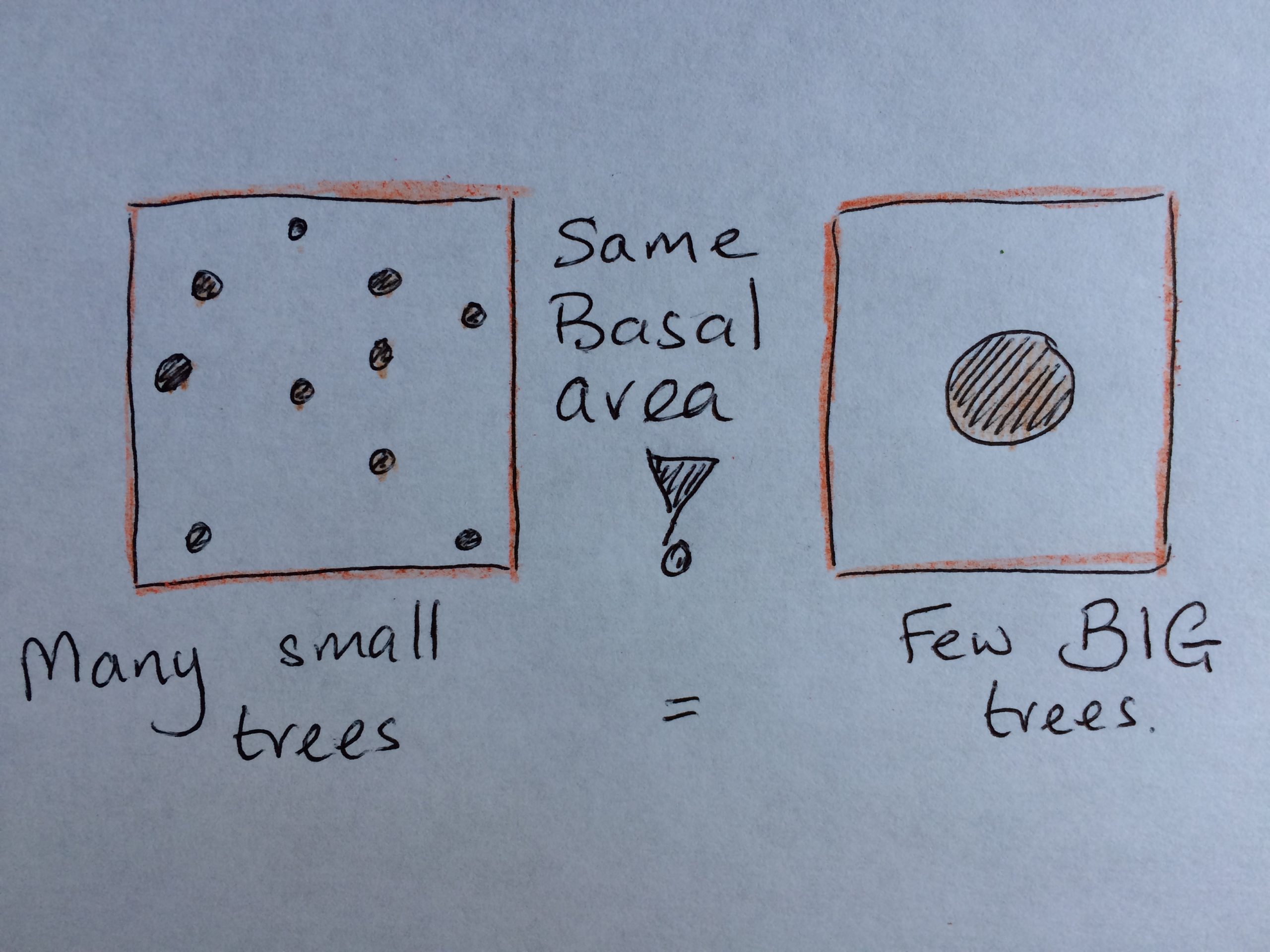
How much tree, not how many trees!
How can you measure basal area? One way is to mark out plots of a known area and measure every stem; pretty good for accuracy but very slow! Instead, you can use an instrument called a relascope (or angle gauge). These come in various forms. For about £40 you can buy a beautiful wedge prism relascope. Gabriel Hemery describes how to use one. However, we can use the same principles (see Relascope Maths) and make a serviceable relascope with nothing more complicated than some card and a piece of string.
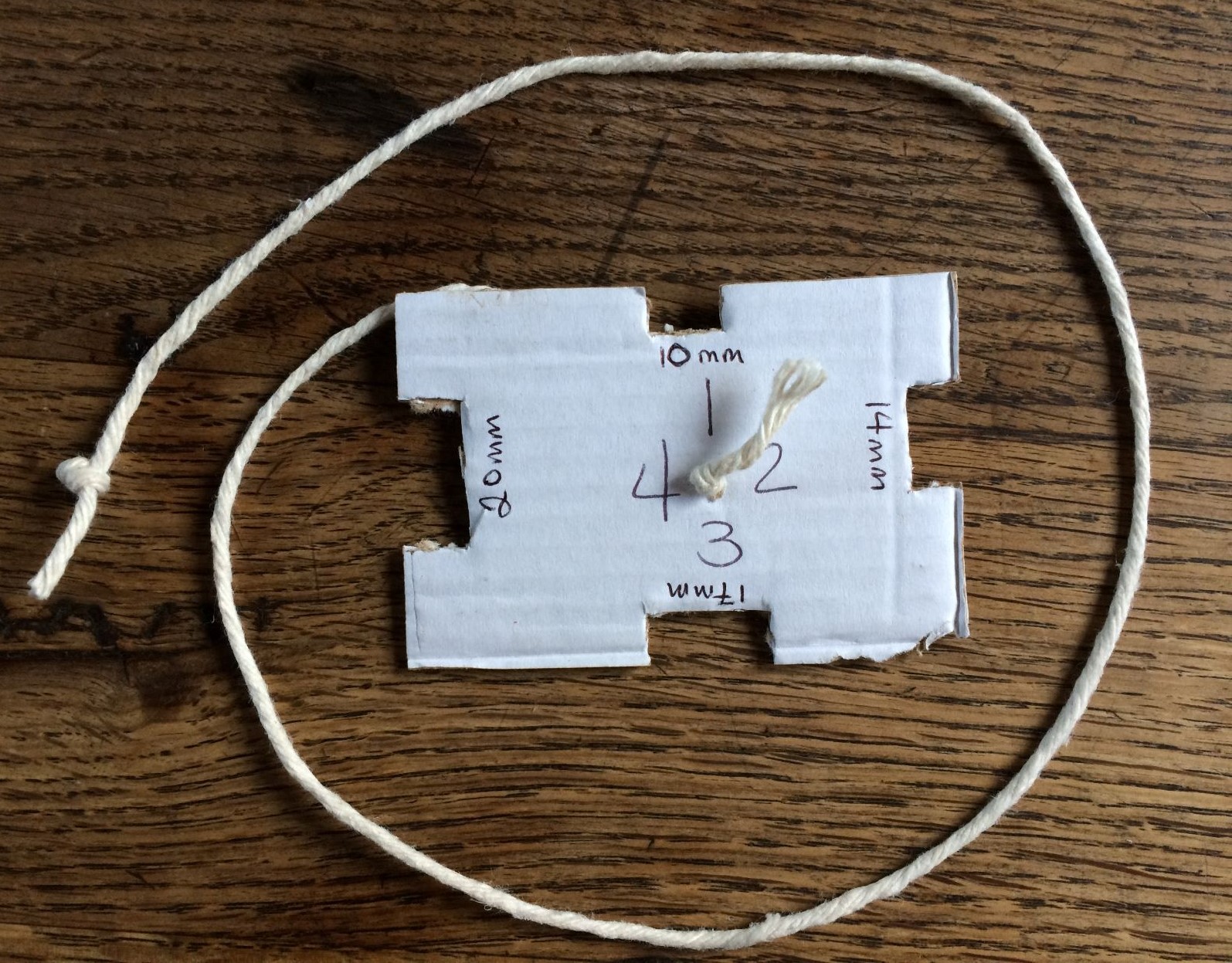
Blue Peter Relascope
This relascope was made using information in the Forestry Commission’s ‘Forest Mensuration – A Handbook for Practitioners’ (Matthews and Mackie, 2006). (I didn’t cut up the book. I read the book and cut up my lateral flow test box). The card has four slots of width:
1 1.0cm 2 1.4cm 3 1.7cm 4 2.0cm
and has a piece of string threaded through the middle. Tie a knot in the string to mark where it is 50cm from the card.
To use your relascope, stand in your woodland and hold the free end of the string next to your eye with the card held out before you so the 50cm long string is taught.
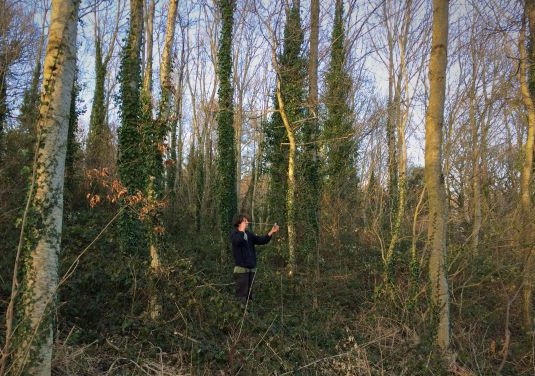
Using a relascope
Look through one of the slots, pick a start tree and score it like this…
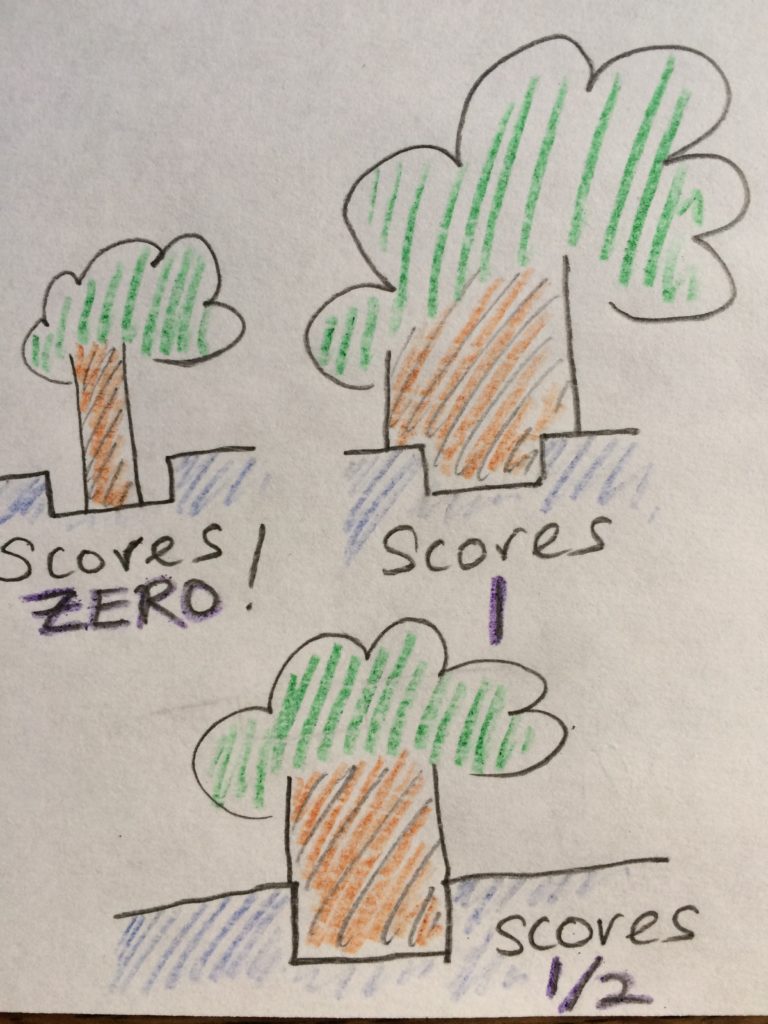
Scoring your trees
Score 1 if the trunk is wider than the slot, 0 if it’s narrower, and a half if it fits the slot exactly. Then turn slowly on the spot, adding the scores of all the trees big enough to fill the slot until you get back to your original tree.
How many trees achieved a score? You want 10-15 trees to be big enough to score. If you scored fewer than 10, try again with a narrower slot. If you had more than 15, try a wider slot.
If you used Slot 1 (10mm wide) then your total score is the basal area that part of your woodland. If you used a wider slot, then multiply the total score by the number by the slot (the Basal Area Factor 2,3 or 4) to find your basal area.
Congratulations! You may now survey the basal area of your woodland!
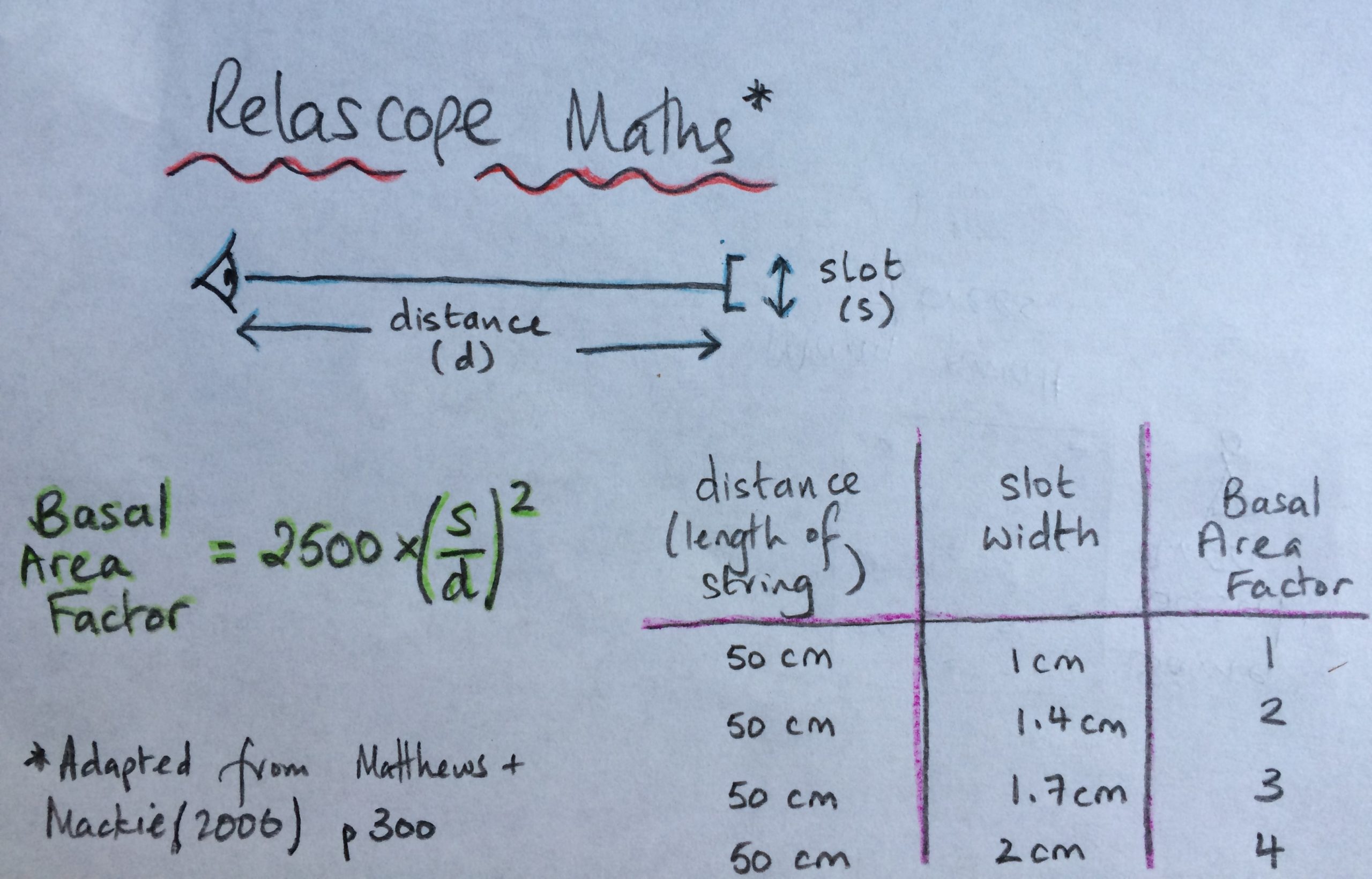
The Numbers
